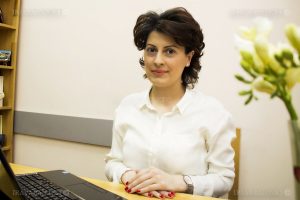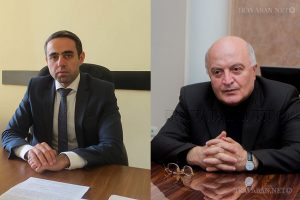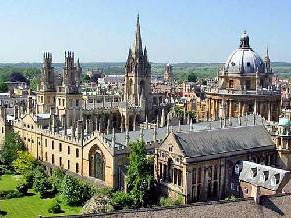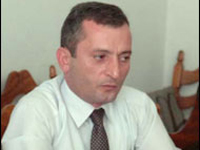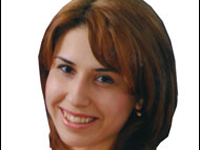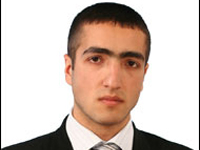Karen Zadoyan
President of the Armenian Young Lawyers Association, UN Expert
June 2007
An analysis of the RA’s legislation on elections is extremely important from the perspective of gender disproportionality. The legislative process must offer women and men equal rights and equal opportunity, in an effort to bring to reality the start of an indivisible process. With election rights, one receives the right to elect and to be elected under normative standards. The RA’s election code does not raise any suspicions in the equality of a man’s and woman’s right to vote and be voted for. However, the ability in making such rights a reality is connected to various issues. In de jure, a woman’s political rights in Armenia have an honest and blooming appearance. In de facto, those political rights are bringing forward unfavorable advancements, and women continue to be subjected to discrimination, by continuing to be considered a social-demographic group. Presently, these discriminations are appearing at a time of implementation of political laws, of which is directly connected to the birth of political-governing bodies. All this will be demonstrated with a comparative analysis.
Armenia’s parliamentary traditions, in reality, started at the end of the 18th century. In 1773, in Madras, S.Shahamiryan’s work, “Vorogayt Parats” came to light, which revealed constitutional, and parliamentary terms and provisions. On May 28, 1918, Armenia was declared a free state. Armenia’s parliament was created, which consisted of 82 individuals, of which 3 or 3.66% were women.
On November 29, 1920, parliamentary orders were established in Armenia. In succession to the 1st Republic of Armenia, ASSR became Armenia’s 2nd Republic of Armenia, and became part of the USSR. At such time, council conferences were assembled and Supreme Council sessions took place. In the elected bodies, women had their permanent presence. From the beginning of the restructuring, women made up 32.8% of the USSR Supreme Council (1984 elections) delegates, 36% of the Supreme Councils of Union Republics (1985 elections), and 50% of the district and village councils (1985 elections). However, for appearance purposes of the elected bodies, women’s votes were falsely entered, which were not reflective of their political involvement and role. At the first alternative and free elections, representation by women was sharply reduced in both the U.S.S.R, and in Armenian Supreme Councils. At the 1998 the USSR Supreme Council elections, from 2250 deputy seats, women took hold of 343 seats or 15.6% of all the seats.
At the first convocation of the Supreme Council in Armenia, which was organized and took place in 1990, from two pools which took place on May 20 and June 3, and from 260 majority seats, women took hold of 9 seats, which accounted to only 3.46% of all the seats. In comparison with the first Republic of Armenia council, this was only slightly less.
At the first convocation of the RA National Assembly elections, which took place on July 5, 1995, from 190 deputy seats, women took hold of 12 seats or 6.32% of all the seats, which was nearly 3% greater than the preceding elections. From 150 majority seats, women only took hold of 4 seats or 2.67% of all the majority seats. From 40 proportional seats, women took hold of 8 seats or 20% of all the proportional seats.
At the second convocation of the RA National Assembly elections, which took place on May 30, 1999, from 131 deputy seats, women took hold of 4 seats or 3.05% of all the seats, which in comparison, was 3.27% less than the preceding elections. From 75 majority seats, women only took hold of 1 seat or 1.33% of all the majority seats, which was nearly 2 times less than the preceding elections. From 56 proportional seats, women took hold of 3 seats or 5.36% of all the proportional seats, which in comparison, was nearly 4 times less than the preceding elections.
At the third convocation of the RA National Assembly elections, which took place on May 25, 2003, from 131 deputy seats, women took hold of 7 seats or 5.34% of all the seats, which in comparison, was 2.29% greater than the preceding elections. From 56 majority seats, women took hold of only 1 seat or 1.79% of all the majority seats, which was only slightly greater than the preceding elections. From 75 proportional seats, women took hold of 6 seats or 8% of all the proportional seats, which in comparison, was nearly 2.64% greater than the preceding elections.
At the fourth convocation of the RA National Assembly elections, which took place on May 12, 2007, from 131 deputy seats, women took hold of 12 seats or 9.16% of all the seats, which in comparison, was 3.82% greater than the preceding elections. From 41 majority seats, women did not take hold of any seats. In the preceding elections, women had one deputy mandate, which was 1.79% of all the majority seats. From 90 proportional seats, women took hold of 12 seats or 13.33% of all the proportional seats, which in comparison, was nearly 5.33% greater than the preceding elections.
An analysis of all five convocations of the RA National Assembly elections reveal that representation by women remain rather low, especially since, in comparison to the 1990 elections, the number of women only increased by 5.7%. Furthermore, at present, women represent only 9.16% of all the deputy seats. For comparison purposes, it is necessary to point out the recorded figures for our four neighboring countries. From our neighboring countries, women comprise 11.3% of all the deputy seats in Azerbaijan’s Parliament, 9.4% in Georgia, 4.4% in Turkey, and 4.1% in Iran. In comparison to the first convocation of the RA National Assembly elections, which was 4 women or 2.67%, an analysis of the number of women elected in the majority process of the fourth convocation of the RA National Assembly elections reveals that, the representation of women has amounted to zero. The decrease has resulted to 2.67%. An analysis of the number of women elected in the proportional process of the fourth convocation of the RA National Assembly elections reveals that, in comparison with the first convocation of the RA National Assembly elections (8 women), the number of women has increased (12 women). However, in terms of percentage, in comparison with the first convocation of the RA National Assembly (20%), representation by women has decreased to 13.3%. Furthermore, in the first convocation of the RA National Assembly proportional list, those women who were deputy, had received such mandates from altogether one “Shamiram” public political organization’s election list, and in the fourth convocation of the RA National Assembly proportional list, those women who were deputy, had received such mandates as a result of the RPA (Republican Party of Armenia), PAP (“Prosperous Armenia” Party), ARF (Party Armenian Revolutionary Front “Dashnaktsutyun”), Heritage Party, and “Orinats Yerkir” (Rule of Law) Party lists.
Schematic picture of the gender analysis of the national assemblies of all convocations of the Third Republic of Armenia.
National Assemblies of the 3rd Republic of Armenia Total number of deputies Majority vote Proportional Vote Total number of women deputies Number of majority vote women deputies Number of proportional vote women deputies
The 1990 first convocation of the Supreme Council of Armenia 260 260 0 9/3.46% 9/3.46% 0
The 1995 first convocation of the RA National Assembly 190 150 40 12/6.32% 4/2.67% 8/20%
The 1999 second convocation of the RA National Assembly 131 75 56 4/3.05% 1/1.33% 3/5.36%
The 2003 third convocation of the RA National Assembly 131 56 75 7/5.34% 1/1.79% 6/8%
The 2007 fourth convocation of the RA National Assembly 131 41 90 12/9.16% 0 12/13.33%
An analysis of the fourth convocation of the RA National Assembly elections reveals that, numerous violations of the 2nd section of the 100th clause of the Electoral Code of the republic of Armenia were present in nearly all the political parties’ proportional lists, which states that, “accordingly, in the election list, at a minimum, every tenth must be a woman.” These violations exist because the political parties and the RA Central Committee have incorrectly comprehended, interpreted, and implemented the aforementioned Code. For example, if in a political party’s proportional list, a woman fills the fifth spot, the law requires that the next woman fill the fifteenth spot, with the exception of circumstances in which, for example, in addition to filling the 5th spot, a woman also fills the 3rd spot.
In observing the representation of women in the government and in the local self-governing bodies, it is important to point out that from 16 ministers in the RA, only 1; the Minister of Culture is a woman, which accounts to 6.25% of all the ministers. Also, from 926 mayors and village mayors, only 16 are women, or 1.73%.
With respect to the decline of representation by women, the aforementioned facts clearly reveal the gender inequalities evident in the legislative, executive, and local self-governing bodies. Even with evidence of a woman’s ability and readiness, and in frequently having a higher level of education than men, women are not in control of the election technologies, and do not have special knowledge of the civic system, state governance, and spheres of rights. Furthermore, it is necessary to point out that among all these factors, the discord in Armenia’s women’s movement is also to blame.
At present, the RA’s governing pyramid structure does not accurately depict women’s and men’s new roles, nor does it accurately depict the ability of women to have an effect on societal, state, and family matters. Furthermore, it does not allow for the security of societal development and the correct democratization of social orientation. In fact, in the RA, in its decision making process, 52% of the majority only has 9% representation.
In looking at the aforementioned analysis, in order to accelerate the equality of rights between men and women, and to raise gender sensitivity in the legislative to the international level, it is necessary to carry out changes and additions in the RA’s Electoral Code. Specifically, it is necessary to re-write the 2nd section of the 100th clause of the RA’s Electoral Code as follows, “Each political party has the right to bring forward only one list of delegated nominees. When a political party alliance is formed, each included political party does not have the right to bring forward a separate nominee list in its own name. In the National Assembly proportional election process, within every 10 persons of the presented election list, no more than 70% of a political parties (political party alliance) nominees may be of the same sex. The proportional election process lists presented by the political parties may also include non-party persons,” and in the 1st section of the 102nd clause of the same Code, it is necessary to add the following content as a third point. “The political party (political party alliance/pact) has violated the provisions of the 2nd section of the 100th Clause of the RA Electoral Code.” All this allows for the increase of representation by women in the country’s parliament, and a political party or a political party alliance that does not follow the provisions of the Electoral Code will be denied the recording of its election list by the RA Central Election Committee.






